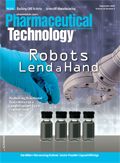Inside ICH–MHLW: Working Groups Ramp up Quality-based Implementation
Representatives of Japan's MHLW report on recent ICH activities and what the ministry expects from Q11.
The International Conference on Harmonization's Implementation Working Group for the quality trio (Q–IWG) held its third meeting in Yokohama, Japan, this past June. Established in October 2007, the group's mission is to promote consistent implementation of ICH Q8 Pharmaceutical Development, ICH Q9 Quality Risk Management, and ICH Q10 Pharmaceutical Quality System around the world and to help industry and regulators maximize the benefits that can be gained from interaction between the guidelines.
Quality–trio implementation
Because the concepts and principles within ICH Q8, Q9, and Q10 are rather new, it is important to provide clarity on how they can and should be used. Since April 2009, Q–IWG has published 40 questions and answers on the ICH website addressing common questions and concerns. Topics addressed include design space, real-time-release testing, good manufacturing practices, knowledge management, and software solutions. The relationship between continuous-process verification and process validation, and the topic of postapproval product-related inspections have been identified for further discussion.
In June, Q–IWG assigned case-study topic coordinators to write and publish articles and position papers on the quality trio guidelines. In addition, Q–IWG agreed to sponsor three workshops in 2010—one in each ICH region (North America, Europe, and Japan)—to enhance harmonized implementation training among industry and regulators. The workshops will be conducted by ICH experts involved in the guidelines' development.
Q11 makes headway
Representatives of the ICH Q11 expert working group discussed the pending guideline on Development and Manufacture of Drug Substances, including chemical entities and biotechnological/biological entities, during the Yokohama meeting. The group prioritized items that need improvement in the guideline's text, which currently exists as a concept paper.
Participants agreed that the scope of Q11 should not be limited to what to file in a common technical document (CTD)—the bulk of the concept paper—but also should address the more general concepts of drug-substance development and manufacture. The group also discussed sections on starting materials, process validation, development, and control strategy. The group intends to create a revised draft of Q11, including a new product life-cycle section, at its St. Louis, MO, meeting in October 2009. A Step-2 signoff (i.e., consensus by all ICH parties) of Q11 is expected in June 2010.
Japan's perspective
One challenge facing Japan's Ministry of Health, Labor, and Welfare (MHLW), an ICH party, with regard to Q11 is that the quality of information on drug substances submitted in new drug applications (NDAs) is often inadequate, especially when using the drug-master-file (DMF) system. This inadequacy occurs because DMFs are often prepared by companies that are unfamiliar with NDAs. Despite being created in a CTD format, in many cases, the DMFs' description of manufacturing process and justification of control strategy are insufficient, leading to increased review time and workload on the part of the regulators.
In addition, Japan's Pharmaceutical Affairs Law was revised in 2004 to introduce the use of marketing business licenses. These new licenses, which replaced traditional manufacturing business licenses, enabled pharmaceutical drug marketing authorization holders (MAHs) to outsource their products, a practice that is expected to increase significantly in the coming years. MHLW also expects MAHs to appropriately carry out technology transfer and to perform change-management controls based on knowledge obtained in development studies, with the goal of accelerating continual improvement.
MHLW hopes that Q11 can be a useful tool to encourage communication, not only between industry and regulators, but also between manufacturers and outsourcing partners. Under Q11, pharmaceutical companies will be encouraged to clearly state the rationale for their manufacturing process and control strategy in their NDA documents and within any outsourcing activity agreements.
Tsuyoshi Ando is a reviewer in the Office of Biologics of the Japanese Pharmaceuticals and Medical Devices Agency (PMDA) and serves as the Ministry of Health, Labor, and Welfare (MHLW) Q11 deputy topic leader; Yukio Hiyama* is section chief for the Division of Drugs at the National Institute of Health Sciences (NIHS) and the MHLW Q9 and Q10 topic leader; Yoshihiro Matsuda is a reviewer in PMDA's Office of New Drugs (OND) and the MHLW Q11 topic leader; Tamiji Nakanishi is a reviewer in PMDA's OND and the MHLW Q–IWG topic leader; and Haruhiro Okuda is director of the Division of Organic Chemistry at NIHS, all in Tokyo, Japan, hiyama@nihs.go.jp. Industry is welcome to submit proposals to Q–IWG at www.ich.org.
